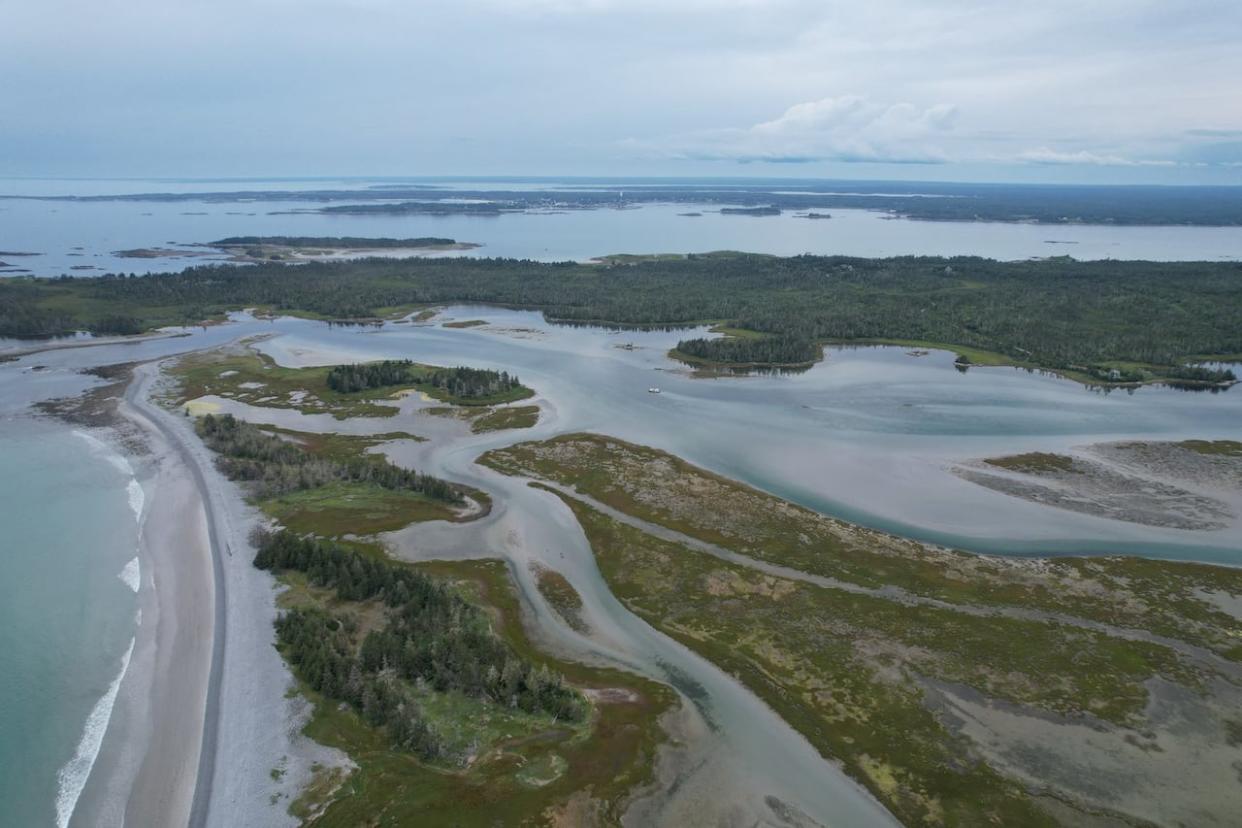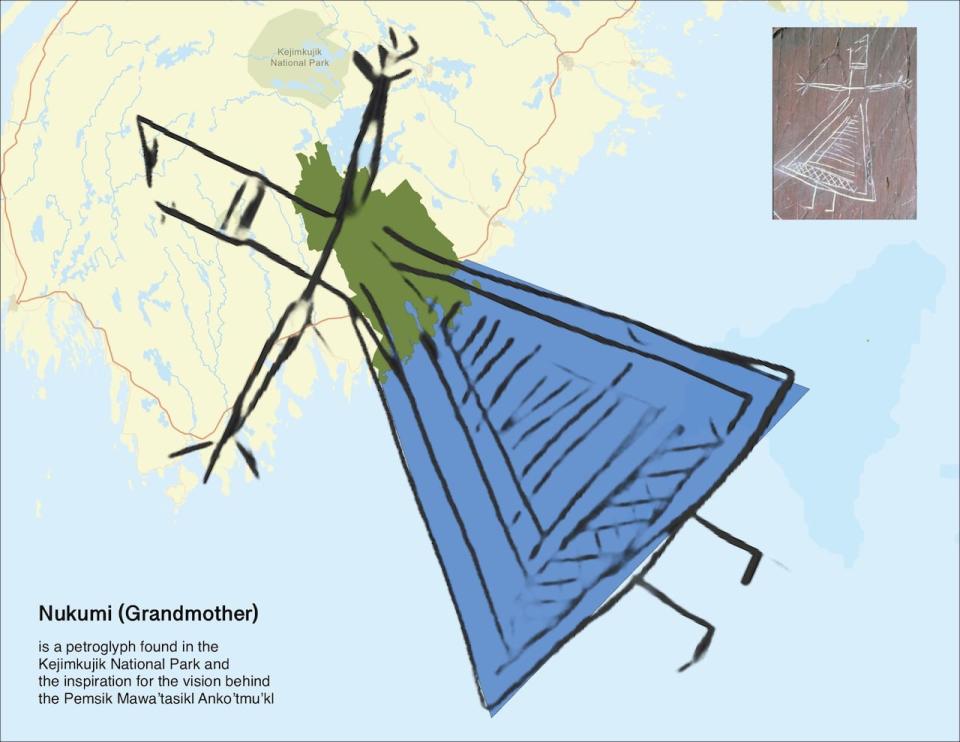Parks Canada considering Mi'kmaq-led sea conservation area in southwest N.S.

Parks Canada says a large, Indigenous-led marine conservation area proposed off the south shore of Nova Scotia "aligns" with its mandate to protect natural heritage sites.
The plan is part of a broader conservation initiative known as Pemsik, which would also include land stretching from Port Joli in Queens County to the Tobeatic Wilderness Area.
"From a Mi'kmaw perspective, it was a very important space to my people," said Melissa Labrador, the driving force behind Pemsik.
The vision of Pemsik — which is still in its early stages — integrates land and water, with an outline that resembles a grandmother petroglyph found at Kejimkujik National Park. The ocean portion is shaped like a skirt, extending seaward for dozens of kilometres.
Melissa Labrador on Carters Beach, near Port Mouton, N.S. She is the driving force behind the proposed Pemsik national marine conservation area. (Paul Withers/CBC)
"She is kind of the spirit behind the study area," Labrador said, adding the proposed boundaries are subject to change.
The plan includes several areas that are already protected including the seaside portion of Kejimkujik National Park and a 156-hectare parcel in Port Joli preserved by the Nova Scotia Nature Trust.
"Looking at the different marine conservation tools, the Parks Canada tool, the national marine conservation area seems to be the best fit because it looks at sustainable fisheries still being able to take place. It looks at culture, looks at community, well-being," she said in an interview on the white sands of Carters Beach near Port Mouton, soon to be a provincial park and inside the Pemsik study area.
Proposal submitted in 2022
The marine component of Pemsik was proposed by the Bear River First Nation as a possible Parks Canada national marine conservation area in 2022.
The federal agency said Pemsik is still in an exploratory phase, but it is sending positive signals.

A map of the proposed Pemsik conservation area roughly resembles a grandmother petroglyph found at Kejimkujik National Park. The ocean portion is shaped like a skirt, extending seaward for dozens of kilometers. (Submitted by Melissa Labrador)
"Parks Canada's integrated mandate to protect and present both cultural and natural heritage sites of significance to the people living in Canada aligns with the Indigenous-led vision of the Pemsik conservation mosaic," spokesperson Robyn Hufnagel said in a statement to CBC News.
A Parks Canada representative and Melissa Labrador met with fishermen and fishing associations earlier this month to discuss the proposal.
'We like what we heard'
Dan Fleck of the Brazil Rock Lobster Association was one of the inshore fishing representatives who met with Labrador and Parks Canada.
"We like what we heard," he said.
"It protects traditional lobster grounds from offshore wind, oil and gas developments, [fin fish] aquaculture. We look forward to seeing this in writing to confirm that what we're hearing is the facts," Fleck told CBC News.
"We have faith in Parks Canada and Bear River," he added.
Lobster fishing sustainable
Labrador said Pemsik would have no impact on lobster fishing and a small herring fishery inside the proposed national marine conservation area since both are sustainable.
"We have such great opportunities to work together collaboratively so that we can leave something for the generations yet to come," she said.

White sand beaches and turquoise waters are within the proposed conservation area. (Submitted by Melissa Labrador)
"They'll still have fisheries, they'll still have forestry, they'll still have land, natural landscapes, and that's important as part of this as well. Conservation doesn't mean things stop. Conservation means we stop wasting our natural resources," she said.
Some scallop dragging occurs inside Pemsik's boundaries and would be prohibited in a conservation area because it disturbs the sea floor.
Parks Canada said if Pemsik proceeds to a feasibility study — which Labrador expects this summer — extensive consultation will take place with "federal and provincial departments, Indigenous governments, Indigenous organizations, local communities, key stakeholders (including industry), and the public."
MORE TOP STORIES


